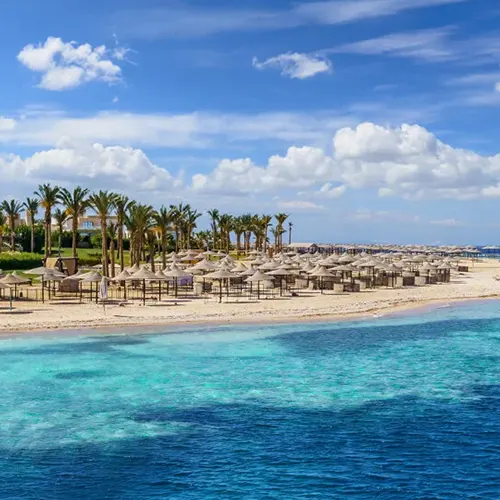
The Citadel of Qaitbay is considered as one of the most important defensive fortresses along the Mediterranean Sea coast. It is located on the eastern side of Pharos Island in Alexandria.
The history of Citadel of Qaitbay This citadel was constructed by Circassian Sultan Al-Ashraf Abou Anasr Saif El-Din Qaitbay El-Jerkasy Al-Zahiry in 1477 to defend the Egyptian northern borders against the Ottoman attacks, as it was used as barracks for the soldiers and armories.
Sultan Qaitbay was a Mamluk and came to Egypt when he was young. Qaitbay became the Sultan in 1468. He was one of the most prominent Mamluk Sultans.
Qaitbay Citadel was established where the place of Lighthouse of Alexandria, one of the Seven Wonders of the Ancient World. Egypt was distinguishes housing two wonders of the Seven Wonders of the Ancient World, the great pyramid of Khufu and the Lighthouse of Alexandria.
This lighthouse was built during the Ptolemaic period and destroyed due to an earthquake that occurred in 1303. Some of the lighthouse stones and blocks were reused in the construction of the citadel.

Throughout history, this citadel played a vital role due to its strategic location, so the Sultans and rulers keened to maintain it continuously. The citadel continued to function during the Mameluke period, the Ottoman period, and the Modern period, but in 1882 during Orabi revolt, the citadel was bombed by the British fleet resulting that it became neglected.
The Egyptian Supreme Council of Antiquities in 2005 started to restore it to become a unique tourist destination on the Alexandria coast.
The description of the citadel
- The citadel consists of three floors:
- The first floor contains the mosque divided into a courtyard and four iwans.
- The second floor has several halls and passages, might be used store weapons and provisions.
- The third floor houses the Sultan’s hall where he observed from it the movement of ships in the harbor, grain mill, and bakery for preparing food for soldiers.



